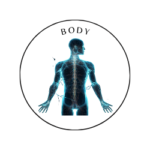 Mind
Mind
- Digital and Modern Well-being
- Mental Health and Emotional Well-being
- Mind-Body Connection and Holistic Health
- Parenting and Family
- Personal Growth and Development
- Relationships and Social Well-being
- Stress and Relaxation
- Therapeutic and Creative Practices
- Trauma and Recovery
- Work, Productivity, and Discipline
 Body
Body
 Fitness
Fitness
 Food
Food
 Beauty
Beauty
Top 10 Exercises to Build Core Strength

Top 10 Exercises to Build Core Strength
Building core strength is essential for stabilizing the body, improving posture, and enhancing performance in virtually every physical activity. The core muscles include the abs, obliques, lower back, and deep stabilizers, which work together to support your spine and torso. Here are the top 10 exercises that target different areas of the core, helping you build strength, stability, and endurance.
1. Plank
Target Muscles: Entire core, including rectus abdominis, transverse abdominis, and lower back.
How to Do It:
- Start in a push-up position, with your elbows directly under your shoulders.
- Engage your core and keep your body in a straight line from head to heels.
- Hold the position for 30–60 seconds, focusing on keeping your hips level and core tight.
Tip: Avoid sagging your hips or arching your back. Keep your gaze slightly forward to maintain neck alignment.
2. Dead Bug
Target Muscles: Rectus abdominis, transverse abdominis, and lower back.
How to Do It:
- Lie on your back with your arms extended toward the ceiling and your knees bent at 90 degrees.
- Slowly lower your right arm and left leg toward the floor while keeping your lower back pressed against the ground.
- Return to the starting position and repeat on the other side.
- Perform 10–12 reps on each side.
Tip: Move slowly and keep your core engaged to avoid arching your lower back.
3. Russian Twists
Target Muscles: Obliques, rectus abdominis, and transverse abdominis.
How to Do It:
- Sit on the floor with your knees bent and feet lifted slightly off the ground.
- Lean back slightly and hold a weight or medicine ball in front of your chest.
- Twist your torso to the right, bringing the weight beside your hip, then twist to the left.
- Perform 12–15 twists on each side.
Tip: Keep your core tight and avoid moving just your arms. The rotation should come from your core.
4. Bicycle Crunches
Target Muscles: Rectus abdominis, obliques, and transverse abdominis.
How to Do It:
- Lie on your back with your hands behind your head and knees bent at 90 degrees.
- Lift your head, neck, and shoulders off the ground, bringing your right elbow toward your left knee while straightening your right leg.
- Switch sides, bringing your left elbow toward your right knee in a pedaling motion.
- Perform 15–20 reps per side.
Tip: Avoid pulling on your neck; keep the movement controlled and steady.
5. Mountain Climbers
Target Muscles: Rectus abdominis, obliques, and transverse abdominis.
How to Do It:
- Start in a plank position with your hands directly under your shoulders.
- Bring your right knee toward your chest, then quickly switch legs, bringing your left knee toward your chest.
- Continue alternating as quickly as possible for 30–60 seconds.
Tip: Keep your core tight and your hips level, avoiding excessive bouncing.
6. Leg Raises
Target Muscles: Lower abs and hip flexors.
How to Do It:
- Lie on your back with your legs extended and hands by your sides or under your lower back for support.
- Keeping your legs straight, lift them toward the ceiling until they form a 90-degree angle with your torso.
- Slowly lower your legs back down without letting them touch the floor.
- Perform 12–15 reps.
Tip: Move slowly to maintain control, and press your lower back into the floor to avoid straining it.
7. Side Plank
Target Muscles: Obliques, transverse abdominis, and glutes.
How to Do It:
- Lie on your side with your elbow directly under your shoulder and legs stacked.
- Lift your hips off the ground, forming a straight line from head to feet.
- Hold for 30–45 seconds on each side, keeping your core engaged and hips lifted.
Tip: Avoid letting your hips drop. Keep your body aligned and gaze forward or slightly upward.
8. Bird Dog
Target Muscles: Lower back, glutes, and transverse abdominis.
How to Do It:
- Start on all fours with your hands under your shoulders and knees under your hips.
- Extend your right arm forward and left leg back, keeping your hips level.
- Hold for a few seconds, then return to the starting position and switch sides.
- Perform 10–12 reps on each side.
Tip: Move slowly and focus on keeping your core stable throughout the exercise.
9. Flutter Kicks
Target Muscles: Lower abs, hip flexors, and quads.
How to Do It:
- Lie on your back with your hands under your glutes for support and your legs extended.
- Lift both legs a few inches off the ground and alternate kicking them up and down in a small, controlled movement.
- Perform for 30–45 seconds.
Tip: Keep your lower back pressed into the floor and avoid arching. Maintain small, quick kicks for better control.
10. Standing Cable Wood Chop
Target Muscles: Obliques, transverse abdominis, and shoulders.
How to Do It:
- Attach a handle to a high cable pulley.
- Stand with feet shoulder-width apart, holding the handle with both hands.
- Pull the handle diagonally down across your body, rotating your torso as you move.
- Return to the starting position and repeat for 10–12 reps, then switch sides.
Tip: Focus on using your core to control the movement rather than your arms or shoulders.
Tips for Effective Core Training
- Focus on Form: Quality over quantity. Use controlled movements and engage your core throughout each exercise.
- Incorporate Variety: Combine different exercises to target all areas of your core, including your upper and lower abs, obliques, and lower back.
- Consistency is Key: Aim for 2–3 core workouts per week, giving your muscles time to recover between sessions.
- Pair with Cardio and Strength Training: A strong core supports better performance in cardio and strength exercises, helping you build overall fitness.
- Stretch After Core Workouts: Finish your core workout with gentle stretching for the abs and lower back to prevent tightness and support recovery.
Building core strength takes time and consistency, but with these exercises, you can develop a strong, stable core that supports all aspects of movement, posture, and overall fitness. Whether you’re an athlete, a fitness enthusiast, or someone looking to improve functional strength, these core exercises are a solid foundation for a healthier, more resilient body.
